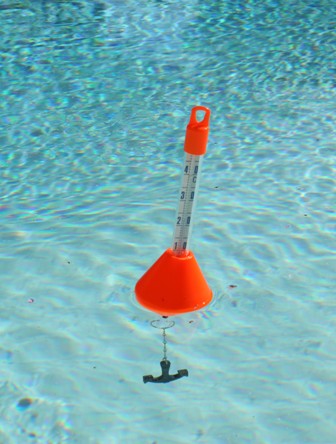
Testing the financial water for free swimming
Edition number 18; dateline 3 April 2009
Flawed but an opportunity nonetheless
As of 1 April free swimming is upon us. The Department for Culture, Media and Sport (DCMS) is very excited, throwing puns (“splash, no cash”), top swimmers (Jo Jackson, Mark Foster and Heather Frederidsen) and celebrities (David Walliams and Mark Foster again, “Strictly Come Dancing star”) into the mix to get the message across.
The message is that the government is throwing money into a free swimming initiative for those aged more than sixty and less than sixteen. The headline figure is £140 million, which includes £50 million capital grants for 2009/10 and 2010/11 (administered by Sport England), and £31 million in the first year of the scheme “to help meet the cost” of providing free access. There is even funding for the recruitment of “a national network of swimming experts” to help local authorities promote interest in swimming and increase participation.
It is not surprising that the free swimming initiative has been one of the regular topics of conversation in leisure management circles since the government first announced the plan and it certainly cropped up during the TLR round table debate (see elsewhere in this issue) as our management experts chewed over the industry’s key issues. Around the leisure sector many have expressed concerns about the origins and the viability of the scheme, offering various explanations and suppositions of why the free swimming initiative has gone off half-cocked. There were only the swiftest of calculations regarding the figures and very little consultation with those that might have given them detailed information. It was hastily – too hastily – announced, leaving local authorities with a very short period of time to work out if the grants being offered were sufficient. Twenty percent of authorities in England decided they were not.
Among the most commonly expressed concerns has been the scale of the funding and the method of allocation. Figures have been based on the population numbers in the target age groups which means that those councils that have been most successful in getting these groups active could be said to have the most to lose under the scheme. If you have managed, the argument goes, to persuade more of the sixty-plus age group in your area to pay their money at the pool gates in the interests of their own health you stand to lose a significant slice of your facility income; whereas if you have done no development work and the over-sixties could not care less about swimming or their health you will be losing a smaller income, plus you will still be receiving the funding on a per-head basis, mainly for people who do not swim. Thus local authorities that have had the most success in pursuing the government’s physical activity agenda have most to lose.
But soft, what light through yonder pool window breaks? The government’s press release announcing the advent of free swimming should give some brief pause to those leisure managers lamenting the financial penalties of free swimming. While most will agree that the scheme has not really been thought through as well as it might have been and that the finances do not wholly stack up, particularly in view of the general state of leisure’s built fabric, they will probably also agree that the sums involved are significant. Even if it was dreamed up by the PM and his mates over a cup of coffee, the scheme illustrates that those at the highest political levels are linking leisure and health. The list of ministers and ministries signing up to the scheme suggests that the implications for this link are beginning to sink in (at the last count the DCMS; the Department for Health; the Department for Children, Schools and Families; the Department for Work and Pensions; the Department for Communities and Local Government; the Olympics minister).
Sport, leisure and culture could do with an awful lot more money if it is to realise its potential and a two-year free swimming initiative will make for a very unimpressive Olympic legacy if left on its own but the free swimming initiative does demonstrate that central government is making the link between investment in leisure and positive health outcomes, between active leisure and a wide range of social and economic goals. Local government knows it – and has been demonstrating it – for years, lamenting the failure of central government to follow their lead. Free swimming is a small beginning but is a huge opportunity for the leisure sector. Success, of course, has many parents and if we can make a success of free swimming that list of government departments will grow and with it will come their budgets.
Jonathan Ives
Editor
letter from the editor
The Leisure Review editorial
